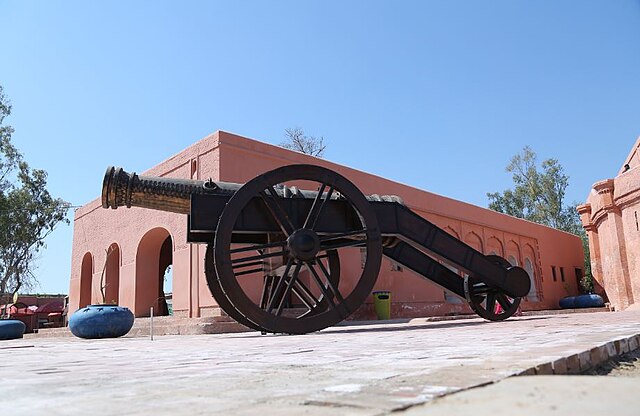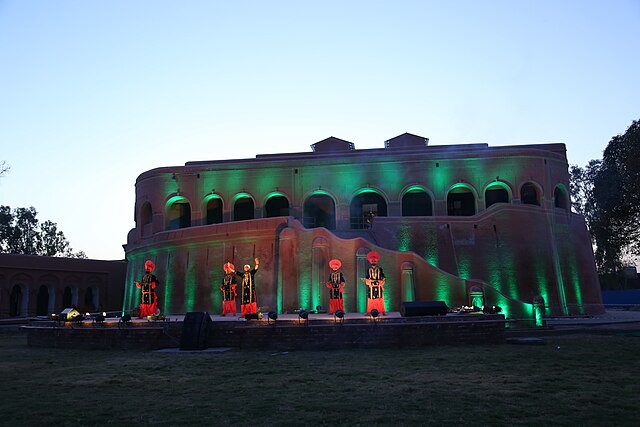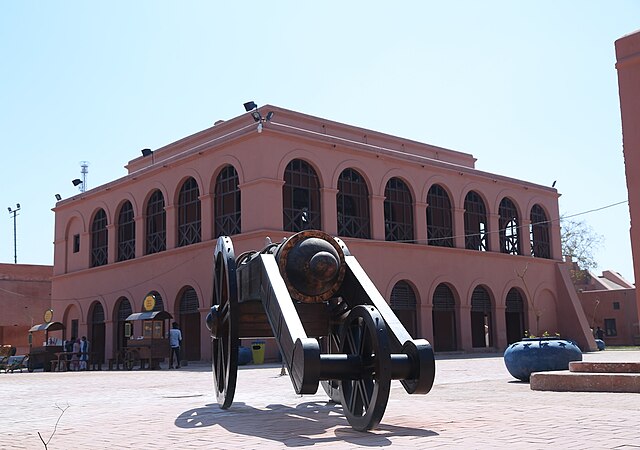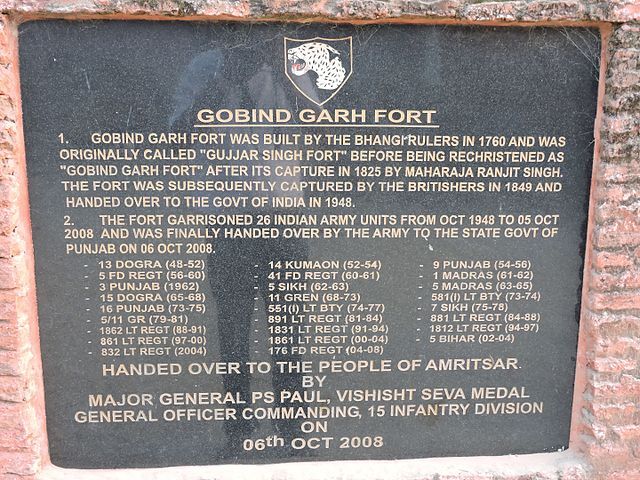Have you ever stumbled upon a place that completely changed your perspective on history? That’s exactly what happens when you step into Gobindgarh Fort in Amritsar. This magnificent fortress, which once served as the treasury of Maharaja Ranjit Singh’s empire, has transformed into one of Punjab’s most captivating cultural destinations.
Nestled in the bustling city of Amritsar, Gobindgarh Fort stands as a testament to Punjab’s rich heritage and the ingenuity of Sikh architecture. What makes this fort truly special isn’t just its historical significance – it’s how seamlessly it bridges the gap between past and present, offering visitors an immersive experience that brings history to life.
Unlike many historical monuments that remain frozen in time, Gobindgarh Fort has embraced modernity while preserving its authentic character. It’s not just a place you visit; it’s a journey through time that engages all your senses and leaves you with a deeper appreciation for Punjab’s glorious past.
The Rich History of Gobindgarh Fort

Birth of a Fortress: 18th Century Beginnings
The story of Gobindgarh Fort begins in the turbulent 18th century when Punjab was a battleground for various powers. Originally constructed during the reign of the Bhangi Misl, this fortress was strategically positioned to control the important trade routes passing through Amritsar.
The name “Gobindgarh” itself tells a fascinating story. It’s derived from Guru Gobind Singh, the tenth Sikh Guru, reflecting the deep spiritual connection that permeates every aspect of Sikh culture and architecture. The fort’s location wasn’t chosen randomly – it was positioned to provide maximum protection to the sacred Golden Temple while maintaining control over the surrounding areas.
During its early years, the fort served multiple purposes. It wasn’t just a military installation; it was a center of administration, a treasury, and a symbol of Sikh sovereignty. The thick walls and strategic design reflected the uncertain times when constant vigilance was necessary for survival.
Maharaja Ranjit Singh’s Strategic Vision
When Maharaja Ranjit Singh rose to power, Gobindgarh Fort underwent its most significant transformation. The Lion of Punjab, as he was known, recognized the fort’s potential and made it the treasury of his vast empire. Can you imagine the amount of wealth that once filled these chambers?
Under Ranjit Singh’s rule, the fort became more than just a military outpost – it became a symbol of Sikh power and prosperity. The Maharaja invested heavily in strengthening its defenses and expanding its facilities. The fort housed not only gold and precious gems but also served as an armory for the formidable Khalsa army.
The strategic importance of Gobindgarh Fort during this period cannot be overstated. It was from here that the financial backbone of the Sikh Empire was managed. The fort’s vaults contained treasures that funded military campaigns, public works, and the administration of one of the most powerful kingdoms in 19th century India.
British Colonial Period and Transformation
The annexation of Punjab by the British in 1849 marked a new chapter in Gobindgarh Fort’s history. The colonial administration recognized the fort’s strategic value and converted it into a military cantonment. This transformation fundamentally changed the fort’s character and purpose.
During the British period, significant modifications were made to accommodate military needs. New structures were added, and existing buildings were repurposed to serve colonial administrative functions. While these changes altered the fort’s original Sikh architecture, they also added layers of history that make the site even more intriguing today.
The fort served as a crucial military installation during both World Wars, playing a role in the larger narrative of India’s struggle for independence. Many freedom fighters were imprisoned within its walls, adding another dimension to its historical significance.
Post-Independence Era and Modern Revival
After India’s independence in 1947, Gobindgarh Fort continued to serve military purposes until it was handed over to the Punjab government. For many years, the fort remained largely inaccessible to the public, shrouded in mystery and gradually falling into disrepair.
The real renaissance of Gobindgarh Fort began in the 21st century when the Punjab government launched an ambitious restoration project. This wasn’t just about preserving old stones and mortar – it was about reviving the soul of Punjab’s heritage and making it accessible to future generations.
The transformation has been remarkable. What was once a restricted military area has become a vibrant cultural hub that attracts visitors from around the world. The restoration project has been carefully planned to maintain historical authenticity while incorporating modern amenities and interactive experiences.
Architectural Marvel: Design and Structure

Fortress Layout and Defensive Features
Walking through Gobindgarh Fort is like reading a book on military architecture. The fort’s design reflects centuries of warfare wisdom, with every element serving a specific defensive purpose. The massive walls, some reaching heights of over 40 feet, were designed to withstand cannon fire and prolonged sieges.
The fort follows a roughly rectangular layout covering approximately 43 acres. The entrance gates are positioned strategically to prevent direct assault, forcing any attacking force to navigate through a series of turns and obstacles. This design, known as a bent entrance, was a common feature in medieval fortifications and served to slow down invaders while exposing them to defensive fire.
The ramparts are wide enough to accommodate cannons and provide excellent vantage points for surveillance. As you walk along these walls today, you can almost hear the echoes of soldiers who once patrolled these very paths, keeping watch over the surrounding plains.
Unique Blend of Sikh and Mughal Styles
One of the most fascinating aspects of Gobindgarh Fort’s architecture is how it seamlessly blends different cultural influences. The Sikh builders weren’t isolated from other architectural traditions; they absorbed and adapted elements from Mughal, Afghan, and local Punjabi styles to create something uniquely their own.
The fort’s gateways showcase this beautiful fusion. The arched entrances reflect Mughal influence, while the overall proportions and decorative elements are distinctly Sikh. The use of red brick and lime mortar, combined with decorative elements in carved stone, creates a visual harmony that’s both powerful and elegant.
The interior buildings display a similar architectural philosophy. The audience halls, residential quarters, and storage facilities all demonstrate how functionality and beauty can coexist. The builders understood that a fortress needed to be more than just a military installation – it had to be a place where people could live and work comfortably.
Recent Restoration and Modern Additions
The recent restoration of Gobindgarh Fort represents one of the most ambitious heritage conservation projects in India. The challenge was enormous: how do you bring a centuries-old fort into the modern era without compromising its historical integrity?
The restoration team adopted a philosophy of “conservative intervention,” meaning they made only necessary changes while preserving as much original material as possible. Modern techniques were used to strengthen ancient walls, and contemporary amenities were added in ways that remain invisible to visitors.
New structures within the fort have been designed to complement rather than compete with the historical architecture. The museum buildings, visitor facilities, and performance spaces all use materials and design elements that harmonize with the fort’s original character.
What Makes Gobindgarh Fort Special Today
Museum and Cultural Exhibitions
Today’s Gobindgarh Fort isn’t just a monument – it’s a living museum that tells the story of Punjab through multiple mediums. The Toshakhana Museum, housed within the fort, displays treasures that once belonged to Maharaja Ranjit Singh’s court. These aren’t just artifacts behind glass; they’re windows into a glorious past.
The museum’s collection includes weapons, coins, manuscripts, and personal items that bring historical figures to life. Interactive displays allow visitors to understand the complexities of 19th century Punjab politics and the remarkable achievements of the Sikh Empire. Have you ever wondered what it would be like to hold a sword once wielded by a Khalsa warrior?
The exhibitions are regularly updated to showcase different aspects of Punjabi culture, from traditional crafts to contemporary art. This dynamic approach ensures that even repeat visitors find something new and exciting during each visit.
Live Performances and Cultural Shows
One of Gobindgarh Fort’s most popular attractions is its evening cultural show, “Sher-e-Punjab.” This spectacular performance brings the story of Maharaja Ranjit Singh to life through a combination of theater, music, dance, and special effects. The show is performed in an outdoor amphitheater within the fort, creating an incredibly atmospheric experience.
The performance isn’t just entertainment – it’s education wrapped in spectacle. Audiences learn about Sikh history, values, and traditions while being thoroughly entertained. The use of technology, including projection mapping and sound effects, creates an immersive experience that appeals to visitors of all ages.
Traditional Punjabi folk performances are also regularly staged within the fort. These shows feature local artists performing classical dances, folk songs, and martial arts demonstrations. It’s like having a private concert in a 200-year-old palace!
Interactive Experiences for Visitors
Modern museums have learned that passive observation isn’t enough – visitors want to participate and engage. Gobindgarh Fort has embraced this philosophy wholeheartedly, offering numerous interactive experiences that make history come alive.
The fort features several hands-on workshops where visitors can try traditional crafts like pottery, weaving, and metalwork. These aren’t just demonstrations; they’re opportunities to create something with your own hands using techniques passed down through generations.
Virtual reality experiences allow visitors to “time travel” and witness historical events as if they were present. Imagine standing in the court of Maharaja Ranjit Singh or witnessing a 19th century military parade – these technologies make such experiences possible.
Shopping and Local Crafts
The fort houses several shops and boutiques showcasing authentic Punjabi crafts and products. These aren’t tourist traps selling mass-produced souvenirs; they’re carefully curated collections of items made by local artisans using traditional techniques.
You can find everything from handwoven textiles and embroidered phulkari work to traditional jewelry and woodcarvings. Each purchase supports local craftspeople and helps preserve traditional skills that might otherwise be lost to industrialization.
Food and Dining Options
No visit to Punjab is complete without experiencing its legendary cuisine, and Gobindgarh Fort doesn’t disappoint. The fort features several dining options, from casual cafes to fine dining restaurants, all serving authentic Punjabi food prepared using traditional recipes.
The highlight is the traditional langar-style meal service, where visitors can experience the Sikh tradition of community dining. Sitting on the floor, sharing a meal with strangers, and participating in this centuries-old custom provides insights into Sikh values that go far beyond architecture and artifacts.
Planning Your Visit to Gobindgarh Fort

Best Time to Visit
Timing your visit to Gobindgarh Fort can make a significant difference in your experience. Punjab’s climate varies dramatically throughout the year, and each season offers different advantages for visitors.
The winter months from October to March are generally considered the best time to visit. The weather is pleasant, with comfortable temperatures during the day and cool evenings. This is also the peak tourist season, so expect larger crowds but also more frequent cultural performances and special events.
Summer visits, while challenging due to the heat, offer their own rewards. The fort is less crowded, and you’ll have more opportunities for peaceful exploration and photography. Early morning and late evening visits during summer can be particularly magical, with golden light illuminating the ancient walls.
The monsoon season brings its own charm to the fort. The rain-washed walls and lush green surroundings create a romantic atmosphere, though some outdoor activities might be limited during heavy rainfall periods.
Entry Fees and Timings
Gobindgarh Fort operates on a ticketing system that’s both affordable and flexible. General admission tickets provide access to the fort’s main areas, museums, and basic facilities. Special packages are available that include guided tours, cultural performances, and dining experiences.
The fort is open throughout the week, with extended hours during peak season and special occasions. Evening visits are particularly recommended, as the fort is beautifully illuminated and the cultural performances take place after sunset.
It’s advisable to check the official website or contact the fort directly for current pricing and any special events that might be taking place during your visit. Group discounts and educational packages are available for schools and tour operators.
How to Reach Gobindgarh Fort
Located in the heart of Amritsar, Gobindgarh Fort is easily accessible by various modes of transportation. The fort is approximately 15 kilometers from Sri Guru Ram Dass Jee International Airport, making it convenient for domestic and international visitors.
If you’re traveling by train, Amritsar Railway Station is the nearest major station, located about 3 kilometers from the fort. Auto-rickshaws, taxis, and app-based cab services are readily available for the short journey to the fort.
For those driving, the fort provides adequate parking facilities. The location is well-connected to major highways, making it accessible for visitors coming from Delhi, Chandigarh, or other nearby cities.
Nearby Attractions in Amritsar
Golden Temple: The Spiritual Heart
No visit to Amritsar is complete without experiencing the Golden Temple, and fortunately, it’s just a short distance from Gobindgarh Fort. This proximity allows visitors to easily combine their historical exploration with a spiritual journey.
The Golden Temple, or Harmandir Sahib, represents the pinnacle of Sikh architecture and spirituality. The contrast between the fort’s military heritage and the temple’s peaceful atmosphere provides visitors with a comprehensive understanding of Sikh culture’s diverse aspects.
The two sites complement each other perfectly – while Gobindgarh Fort showcases the temporal power of the Sikh Empire, the Golden Temple demonstrates the spiritual foundation that made such achievements possible.
Jallianwala Bagh: Historical Memorial
Located within walking distance of both the fort and the Golden Temple, Jallianwala Bagh serves as a sobering reminder of India’s struggle for independence. This memorial commemorates the tragic massacre of 1919 and provides historical context for understanding the region’s complex colonial history.
Visiting all three sites – Gobindgarh Fort, Golden Temple, and Jallianwala Bagh – provides a comprehensive overview of Punjab’s history, from ancient times through the colonial period to independence.
Local Markets and Bazaars
The area surrounding Gobindgarh Fort is rich with traditional markets and bazaars that offer authentic Punjabi shopping experiences. The Hall Bazaar, Katra Jaimal Singh, and Lawrence Road are famous for everything from traditional clothing and jewelry to spices and sweets.
These markets aren’t just shopping destinations; they’re cultural experiences where you can observe daily Punjabi life, sample local foods, and interact with friendly locals who are often eager to share stories about their city’s history.
Photography Tips and Guidelines

Best Photography Spots
Gobindgarh Fort offers numerous photographic opportunities, from architectural details to panoramic views. The ramparts provide excellent vantage points for capturing the fort’s relationship with the surrounding city, while the interior courtyards offer intimate glimpses of daily life within the fortress.
The main gateway, with its imposing arch and decorative elements, makes for a dramatic entrance shot. The museum displays provide opportunities for detailed photography of historical artifacts, though flash photography may be restricted in certain areas.
During cultural performances, the combination of traditional costumes, dramatic lighting, and historical architecture creates perfect conditions for memorable photographs.
Equipment and Timing Suggestions
The fort’s varied lighting conditions require some planning for optimal photography. Early morning and late afternoon provide the best natural lighting for architectural photography, with warm golden light that enhances the fort’s red brick construction.
A wide-angle lens is essential for capturing the fort’s massive scale and architectural details. For performance photography, a fast lens and higher ISO capabilities will be necessary due to the evening lighting conditions.
Always respect photography guidelines and be mindful of other visitors. Some areas may have restrictions on flash photography or commercial photography, so it’s best to check with fort authorities before your visit.
Conservation Efforts and Future Plans
The transformation of Gobindgarh Fort represents more than just renovation – it’s a model for heritage conservation that balances preservation with accessibility. The project has involved archaeologists, historians, architects, and cultural experts working together to ensure authenticity while creating a sustainable tourism destination.
Future plans for the fort include expanding the museum collections, developing new interactive experiences, and creating educational programs for schools and universities. The goal is to make Gobindgarh Fort not just a tourist attraction but a center for learning and cultural exchange.
Conservation efforts extend beyond the physical structure to include intangible heritage – traditional crafts, performing arts, and cultural practices are being documented and preserved for future generations. The fort serves as a living laboratory where traditional skills are practiced and transmitted to new generations.
Conclusion: Why Gobindgarh Fort Should Be on Your Itinerary
Gobindgarh Fort represents everything that makes heritage tourism exciting and meaningful. It’s not just about old buildings and dusty artifacts – it’s about connecting with the living spirit of Punjab’s remarkable history. The fort successfully bridges the gap between past and present, offering visitors an experience that’s both educational and entertaining.
Whether you’re a history enthusiast, a cultural explorer, or simply someone looking for a unique travel experience, Gobindgarh Fort delivers on multiple levels. The combination of authentic historical architecture, engaging museums, spectacular performances, and interactive experiences creates a destination that appeals to all ages and interests.
The fort’s transformation also represents hope for heritage conservation in India. It proves that historical monuments can be preserved and made accessible without compromising their authenticity. As you walk through its ancient corridors and participate in its modern programs, you become part of an ongoing story that connects Punjab’s glorious past with its promising future.
Your visit to Gobindgarh Fort isn’t just sightseeing – it’s time travel, cultural immersion, and historical education all rolled into one unforgettable experience. In a world where authentic cultural experiences are becoming increasingly rare, this remarkable fort stands as a testament to what’s possible when heritage meets vision.
Frequently Asked Questions
1. How much time should I allocate for visiting Gobindgarh Fort?
A comprehensive visit to Gobindgarh Fort typically requires 3-4 hours. This includes time for exploring the museum, walking through the historical areas, and watching cultural performances. If you plan to participate in workshops or dine at the fort, allow additional time for a full day experience.
2. Are there any dress code requirements for visiting Gobindgarh Fort?
While there’s no strict dress code, visitors are encouraged to dress modestly out of respect for the cultural and religious significance of the site. Comfortable walking shoes are recommended as you’ll be exploring various levels and outdoor areas of the fort.
3. Can I visit Gobindgarh Fort and Golden Temple in the same day?
Absolutely! Both attractions are located close to each other in Amritsar, making it easy to visit both in a single day. Many visitors start with the Golden Temple in the morning, then visit Gobindgarh Fort in the afternoon and evening for the cultural performances.
4. Is Gobindgarh Fort suitable for children and elderly visitors?
Yes, the fort has been designed to be accessible to visitors of all ages. There are ramps and accessible pathways for elderly visitors and those with mobility issues. Children particularly enjoy the interactive exhibits and cultural performances, making it an excellent family destination.
5. Are guided tours available at Gobindgarh Fort?
Yes, both audio guides and human guides are available at the fort. Professional guides can provide detailed historical context and stories that bring the fort’s history to life. Audio guides in multiple languages are also available for self-guided exploration at your own pace.

